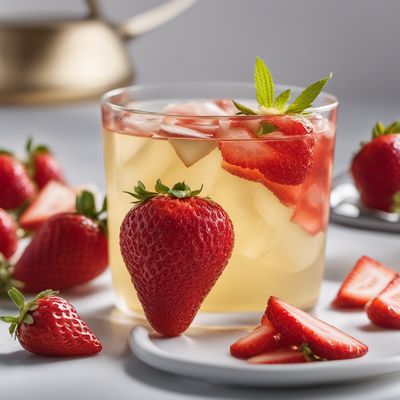
Ingredient
Jiaogulan infusion leaves
"The Immortality Herb: Unlocking the Health Benefits of Jiaogulan Infusion Leaves"
Jiaogulan infusion leaves, scientifically known as Gynostemma pentaphyllum, are native to the mountainous regions of China and other parts of Asia. These heart-shaped leaves have a vibrant green color and a delicate, slightly bitter taste. With a texture similar to spinach, they can be enjoyed both raw and cooked. Jiaogulan leaves are known for their adaptogenic properties, which help the body adapt to stress and promote overall well-being. Rich in antioxidants, they are also believed to support cardiovascular health and boost the immune system.
Origins and history
Jiaogulan infusion leaves have a long history in traditional Chinese medicine, where they have been used for centuries to promote longevity and vitality. The herb was first discovered by a group of Chinese researchers in the 1970s, who were intrigued by the unusually high number of centenarians in a remote mountainous region of China. They found that the locals regularly consumed jiaogulan leaves as a tea, which led to its nickname, the "immortality herb." Since then, jiaogulan has gained recognition worldwide for its health benefits and has been incorporated into various cuisines and wellness practices.
Nutritional information
Jiaogulan infusion leaves are packed with essential nutrients, including vitamins C and E, as well as minerals like potassium, calcium, and magnesium. They are low in calories and carbohydrates, making them a great addition to a balanced diet.
Allergens
There are no known allergens associated with jiaogulan infusion leaves.
How to select
When selecting jiaogulan infusion leaves, look for fresh, vibrant green leaves that are free from blemishes or discoloration. Opt for organically grown leaves whenever possible to ensure the highest quality and avoid any potential pesticide residues.
Storage recommendations
To maintain the freshness and quality of jiaogulan infusion leaves, store them in a sealed plastic bag or airtight container in the refrigerator. They can stay fresh for up to a week. Alternatively, you can dry the leaves and store them in a cool, dark place for several months.
How to produce
Jiaogulan infusion leaves can be grown in both garden beds and containers. They thrive in well-drained soil and prefer partial shade. Start by planting jiaogulan seeds or young plants, and provide regular watering and fertilization. With proper care, the leaves can be harvested within a few months.
Preparation tips
Jiaogulan infusion leaves can be enjoyed in various ways. To make a refreshing tea, steep a handful of leaves in hot water for 5-10 minutes. You can also add the leaves to salads, stir-fries, or soups for an added nutritional boost. When cooking, it's best to add the leaves towards the end to preserve their delicate flavor and texture.
Culinary uses
Jiaogulan infusion leaves are commonly used to make herbal teas, both hot and cold. They can also be added to salads, smoothies, and soups for a nutritious twist. Additionally, the leaves can be used as a natural sweetener in desserts or infused into oils and vinegars for added flavor.
Availability
Jiaogulan infusion leaves are commonly available in Asian markets and specialty health food stores. They are also cultivated in countries like China, Japan, and Thailand.
More ingredients from this category » Browse all

Cowberry infusion leaves
The Nordic Elixir: Cowberry Infusion Leaves

Strawberry infusion leaves
The Fragrant Essence of Strawberry

Chiretta infusion leaves
The Bitter Elixir: Unveiling the Power of Chiretta Infusion Leaves

Eyebright infusion leaves
The Visionary Herb: Exploring the Benefits of Eyebright Infusion Leaves

Ground ivy infusion leaves
"Nature's Herbal Elixir: Unveiling the Wonders of Ground Ivy Infusion Leaves"

Red clover infusion leaves
The Floral Elixir: Discovering the Delicate Flavor of Red Clover

Elder infusion leaves
The Healing Elixir: Unveiling the Power of Elder Infusion Leaves

Hazelnut infusion leaves
Aromatic Hazelnut Elixir

Clubmoss infusion leaves
The Ancient Elixir: Unveiling the Mysteries of Clubmoss Infusion Leaves

Goldenrod infusion leaves
Goldenrod Elixir: Unlocking the Healing Power of Nature

Lemon myrtle infusion leaves
The Zesty Elixir: Lemon Myrtle Infusion Leaves

Yarrow infusion leaves
The Herbal Elixir: Yarrow Infusion Leaves